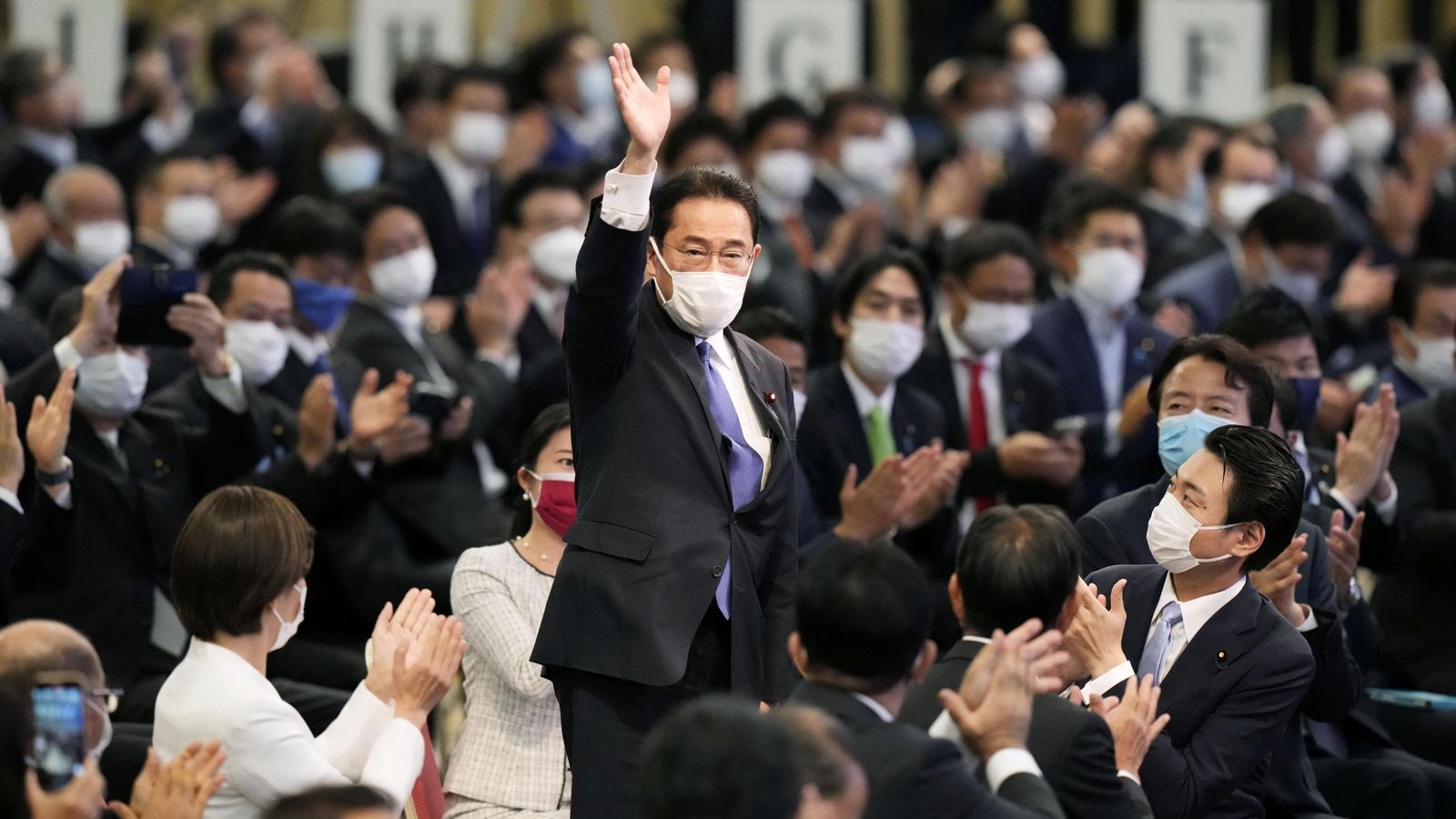Japan is set to get a new prime minister within days after the ruling party elected a new leader following the resignation of the outgoing Yoshihide Suga.
The former foreign minister Fumio Kishida won a race to lead the right-wing Liberal Democratic Party (LDP) on Wednesday, and that result is almost certain to be ratified by parliament.
But in the coming weeks, he faces a general election.
Mr Suga had been in the job for just over a year, having been appointed to the role following the resignation of long-standing PM Shinzo Abe.
Please use Chrome browser for a more accessible video player
Mr Kishida beat the popular vaccinations minister Taro Kono comfortably in a run-off after finishing only one vote ahead of him in the first round.
Two women had also taken part in the first round, but came behind Mr Kishida and Mr Kono.
Mr Kishida said after his victory: “The LDP leadership election is over. Let us all face the lower house and the upper house elections as one.”
Japan PM Yoshihide Suga to step down after a year in top job amid anger over COVID response
‘You will regret this’: Japan crime boss’s chilling threat to judge after being sentenced to death
Sonny Chiba: Japanese actor and Kill Bill star dies aged 82 after COVID diagnosis
Mr Kishida, assuming he becomes and then remains PM, now has the job of reviving the world’s third-largest economy after the COVID-19 crisis and working out how to deal with an ever-more assertive China.
Why did Mr Suga step down?
Because the LDP elects its leaders every three years, and Mr Suga was elected in 2020, he should have been able to stay leader (and therefore PM) until 2023.
But it is believed he decided to step down early, as he was unpopular in the wake of his government’s handling of the coronavirus crisis and his determination to go ahead with the Olympics as infection rates were rising.
A general election is due to be held in the autumn of 2021 and many in the LDP now hope they will be able to win it with Mr Suga replaced.
It is not uncommon for Japanese prime ministers to serve only short terms – mainly because the LDP is the party most often in power and requires its leader to be re-elected every three years.
But it’s also because Japan’s upper house has the power to hold up legislation, often weakening premiers with smaller majorities or less effective coalitions.
The recent exception was Shinzo Abe, who served as PM for seven years and only stood down on health grounds.
Who is Fumio Kishida?
Mr Kishida served as Japan’s foreign minister under Mr Abe from 2012 to 2017.
He has also served as a consumer affairs minister and science and technology minister in previous cabinets, but was out of government for a period after apparently lacking support from senior party figures.
Domestically, he is supportive of stimulating the economy and has said he wants to reduce the differences in income levels in Japan and believes deregulation has widened gaps in society.
Internationally, he is known to want closer cooperation with Taiwan, in recognition that the region could become a flash point with China, while at the same time preserving the vital economic ties with China and holding regular summit meetings.
He is generally considered an establishment figure and his victory is unlikely to trigger a major shift in policies, such as the broad consensus that Japan needs to boost its defences and strengthen security ties with the US and other partners, including the QUAD grouping of Japan, the US, Australia and India.
Specifically, Mr Kishida has said he wants to strengthen Japan’s coastguard and would push for the passing of a resolution condemning treatment of China’s Uighur minority. He is keen to appoint an aide to monitor the Uighurs’ human rights.
But he is said to have a bland image and to enjoy only moderate public support, so he may have difficulties connecting with the electorate at the upcoming general election.
What happens next?
On Monday, Japan’s parliament will assemble to elect the next prime minister.
The candidate who wins the most votes in the lower and upper houses of parliament will get the job.
If the two chambers choose different candidates, and negotiations between the two houses fail to agree on one, whichever the lower house chooses will be made prime minister. Given the LDP’s majority in the lower chamber, it is most likely Mr Kishida will be elected prime minister.
He is expected to form a new cabinet soon after.
Local media have reported they expect the lower chamber will be dissolved in mid-October, with the general election either 7 or 14 November.






















